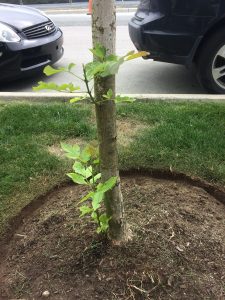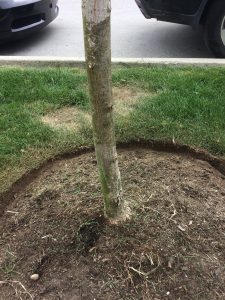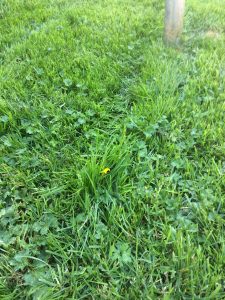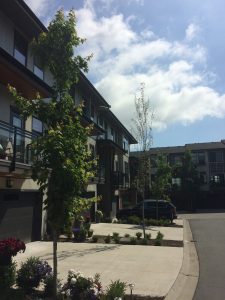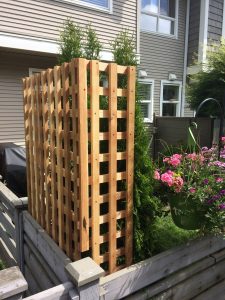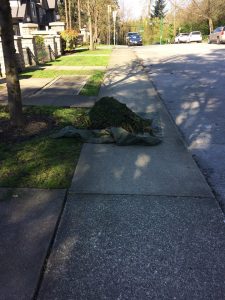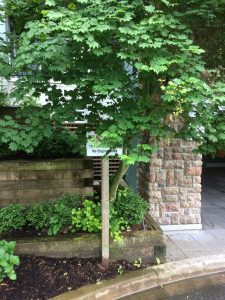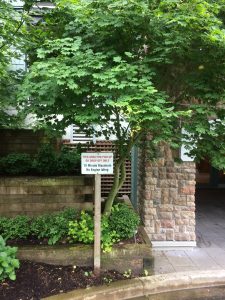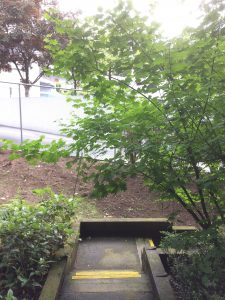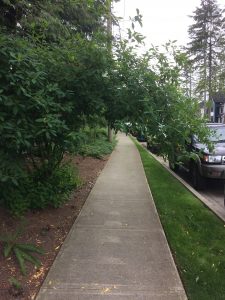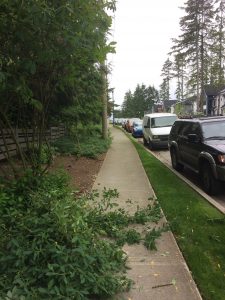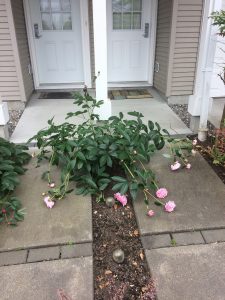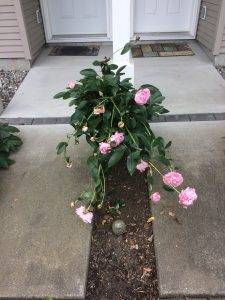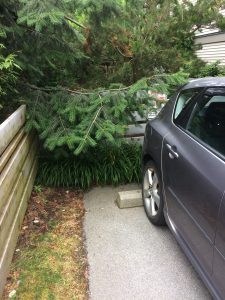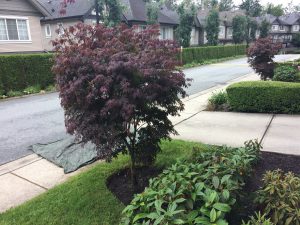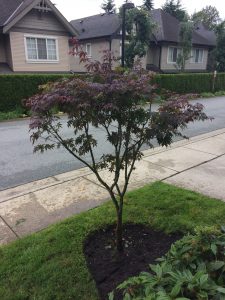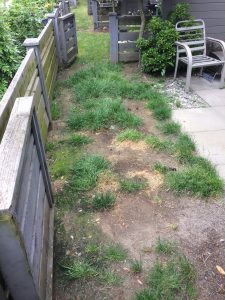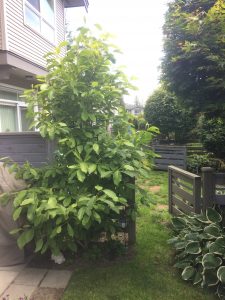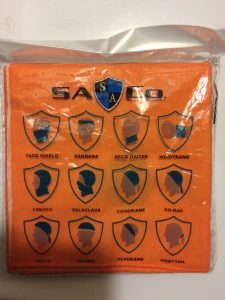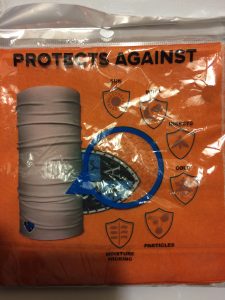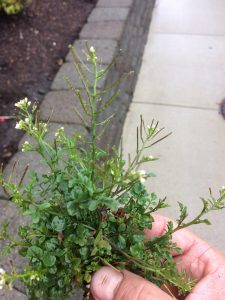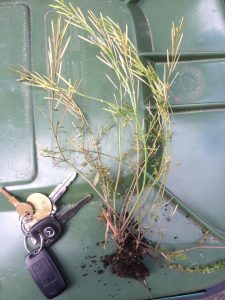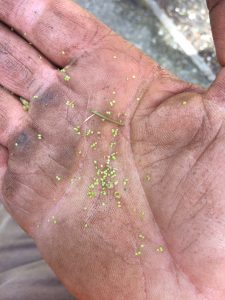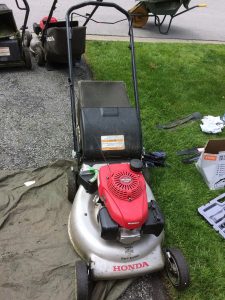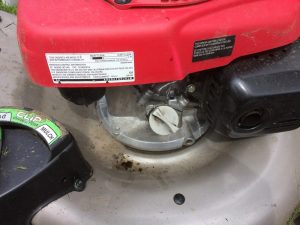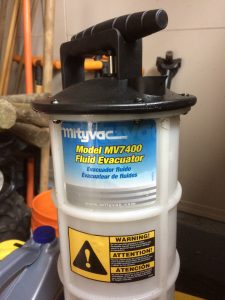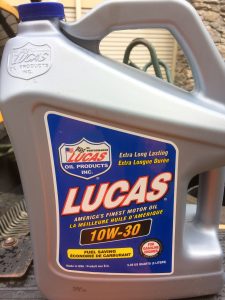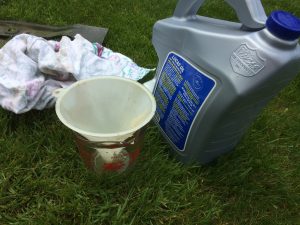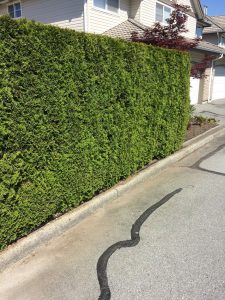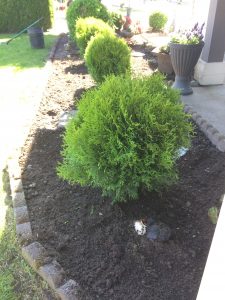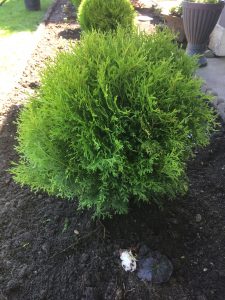In my capacity as landscape supervisor I continuously examine landscapes and look for details. Here is what I found last week.
Tree suckers
Since we don’t want branches developing this low on our boulevard trees it’s best to snip them off. I always carry snips on my belt so this was a quick job. One exception would be really young trees. On young trees the lower branched shield the bark from potential sunshine damage. We can leave lower branches on, noting their eventual removal in subsequent seasons.
Lawn care rookies
Staff training never really ends. I like to gently point out mistakes and suggest corrections. As soon as possible. Just remember that some skills require significant amount of time to master. This applies to line trimming. Our new girl is still terrified of causing damage so she lacks the required aggression. Driftwood is fairly solid so we can take some liberties and get close enough to remove the shaggy grass edge. If driftwood chips fly off, we are obviously too close. We’ll give her more practice time on the line edger and she will improve. I know it takes time.
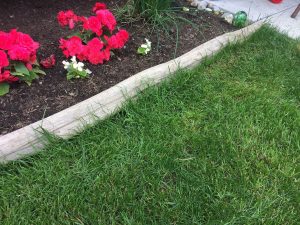
Our new worker will eventually get close enough so the shaggy edge is removed down to mower height. Practice time required.
Weak trees
It’s easy to spot the one weak red maple (Acer rubrum) on this street. Then you have to ask why it’s so weak when its sisters are doing fine. We found out the cause when we attempted to plant boxwoods around the weakling. The soil was so waterlogged we delayed the boxwood planting.
Water displaces oxygen in the soil and if nothing changes, plants suffocate and die. I believe the water leak problem has been corrected so we’ll see what happens with the red maple. My fingers are crossed.
Cedar hedges
I personally planted these two cedars (Thuja occidentalis ‘Smaragd’). So I check on them when I can to see if they’re getting watered. Cedars are thirsty in their first year.
Then this week I noticed a wooden trellis around the cedars. The owner had installed it to protect the cedars. But all I see is shading. The trellis blocks light and will most likely lead to browning. That’s not what the lady wanted to hear.
The above is what I noticed on my sites last week. Pay attention to landscape details.
What did you notice?


